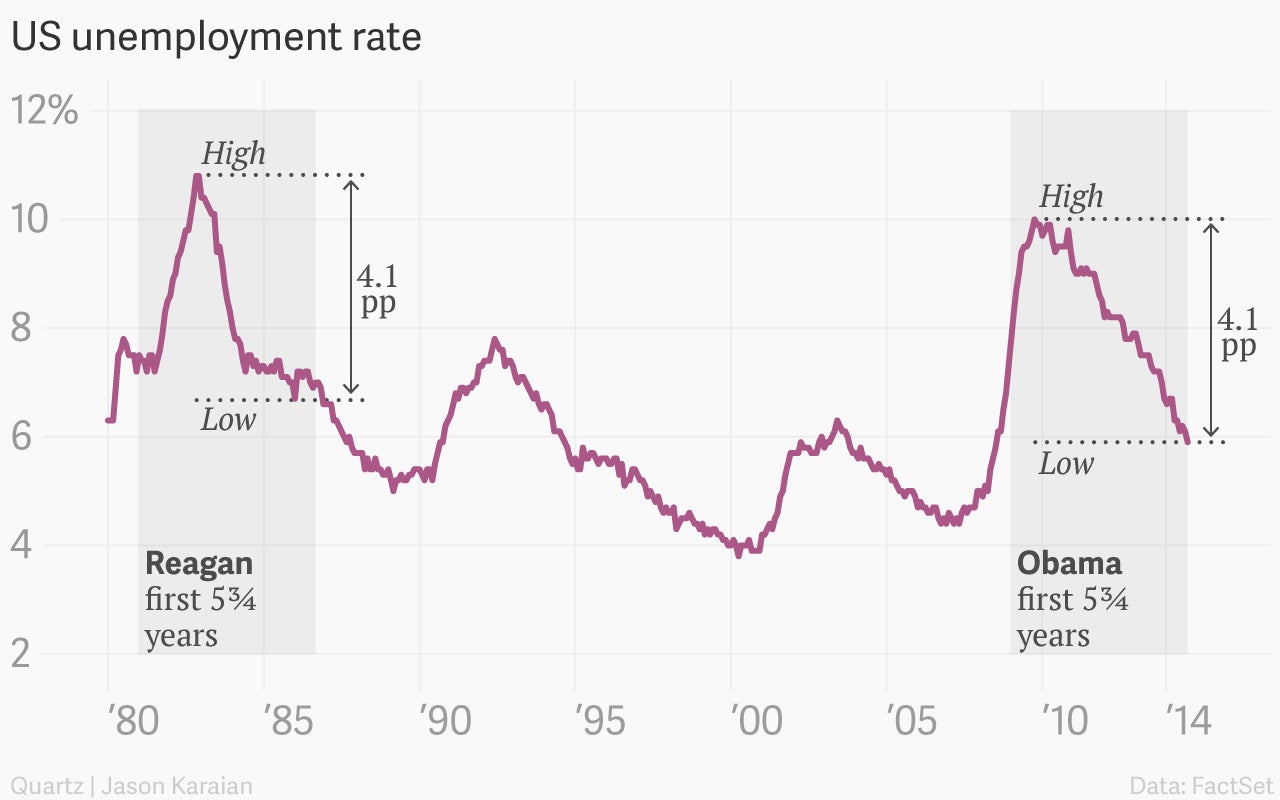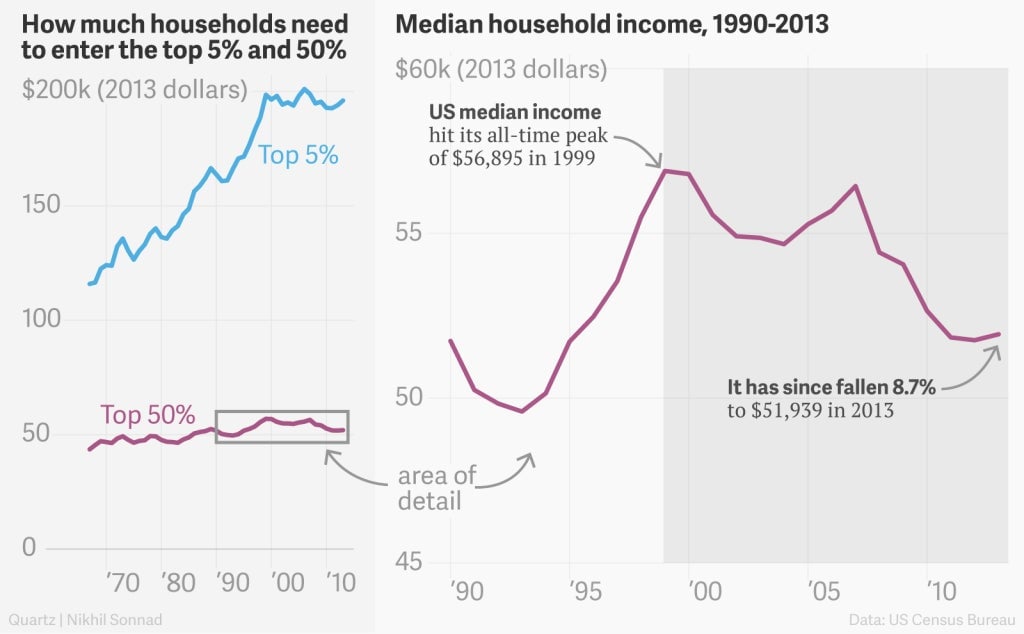Obama is just as good as Reagan at cutting unemployment
When it comes to lowering the US unemployment rate, President Barack Obama has done just as well as the revered conservative icon Ronald Reagan.


When it comes to lowering the US unemployment rate, President Barack Obama has done just as well as the revered conservative icon Ronald Reagan.
During September, Obama’s 69th month in the White House, the broad US unemployment rate fell to 5.9%, the lowest of his administration. The country’s unemployment is down 4.1 percentage points from October 2009, when the jobless rate hit a peak of 10%.
The nastiest stint of joblessness seen in the US in the decades prior to the Great Recession was the recession of the early 1980s, brought on by the US Federal Reserve in order to tame runaway inflation. Much like Obama, President Ronald Reagan took office in the midst of the ugliness. Unemployment climbed steadily for his first two years in office, peaking in November 1982 at 10.8%. It then fell sharply to 6.7% in January 1986. So, again peak-to-trough, a 4.1-percentage-point decline during his first 69 months in office.

In fact, if you go from the beginning of their terms to their 69th month chronologically, Obama looks like he was far more successful at cutting joblessness. From the day he took office until September, unemployment fell 1.9 percentage points under Obama. It was down a scant 0.5 percentage points from the beginning of Reagan’s presidency to his 69th month. (But that’s more an indication that things were just a lot worse when Obama took office, whereas they deteriorated sharply after Reagan became president.)
Now, it goes without saying that there are plenty of people who would argue that neither Reagan nor Obama—nor any president—has much to do with short-term economic growth. Maybe so, but the fact is that presidents and political leaders get the credit and the blame for the state of the economy.
And what’s striking is how sharply different public perceptions of both leaders’ handling of the economy have been. Despite a steadily rising labor market, US sentiment on the economy has remained decidedly sour, and President Obama’s approval rating has fallen. Meanwhile, a turn in the economy in the 1980s helped supercharge Reagan’s approval rating by 1986, a similar point in his presidency. Reagan remains closely identified with economic success.
Why? Who knows. Perhaps it was the fact that the surge and collapse in unemployment was much sharper and faster under Reagan. Maybe it’s that, under Reagan, unemployment continued to fall steadily during his final years in office. Unemployment hit 5.3% in 1988, so during his entire stint in Washington the unemployment rate fell 5.5 percentage points. Of course, Obama could yet witness a similar phenomenon.

But, I have a sneaking suspicion that it’s the persistent weakness of household income, a symptom of worsening income inequality in the US, that’s making many Americans dismiss the improving economic fundamentals.
For example, between the end of Reagan’s first term in office, 1981, and the end of 1986, US real median household incomes—the household income at the middle of the US income distribution—had risen 7.7%. Over the first five years of the Obama administration they’re down 4.1%. In fact, US median incomes are basically where they were in 1989, not long after Reagan left office. In other words, the economy might be improving, but millions of Americans don’t feel it. And that’s one of the reasons the Democrats are likely to feel some pain of their own in the coming US mid-term elections.